Harm from infrared heaters: myths and real dangers
Infrared heaters are very popular today. They are positioned by manufacturers as economical, durable, super-efficient devices. It would seem that this is an ideal solution for organizing additional heating.
At the same time, many buyers are confused by the possible harm of infrared heaters, which is not just something that “grandmothers on a bench” talk about. We will help you sort out this difficult issue. The article we have presented is based on the opinion of specialists who have studied the effects of infrared radiation on the human body.
The content of the article:
Concept of infrared radiation
The source of IR radiation is any heated body. A significant part of the radiation falling on the earth is infrared rays. Do heating devices, the operating principle of which is borrowed from the celestial body, really pose a real threat to human health and the environment? It's worth looking into.
Unlike UV radiation, which triggers photochemical reactions and essentially acts only on the skin, infrared has a predominantly thermal effect and the ability to penetrate deep into tissue.
There are natural and man-made sources of IR radiation, the first include:
- solar radiation;
- thermal waters;
- Forest fires;
- active volcanoes;
- heat and mass transfer in the atmosphere.
All these are processes and phenomena that are very familiar to us, the influence of which on the body is difficult to classify as factors creating a real threat.

Man-made sources of infrared radiation are:
- electric and carbon arcs;
- gas discharge lamps;
- electric heating devices;
- electric stoves with a spiral;
- generators;
- engines;
- ovens;
- infrared lasers;
- plasma installations;
- nuclear reactors, etc.
Thus, it is quite obvious that this radiation is a continuously influencing factor on the human body.
Infrared rays occupy the region of the electromagnetic spectrum located between red visible light and short-wave radio emission.
Infrared radiation itself is conventionally divided into:
- shortwave;
- medium wave;
- long wave.
The length of the waves emitted by a body directly depends on its temperature: the higher it is, the shorter the waves, and the higher the heating intensity.

Operating principle and advantages of devices
In traditional heating systems using radiators or convectors, heat from heating devices is intensively removed into the surrounding space and then distributed throughout the entire volume of the room by mixing the air.
This heat transfer mechanism is called convective. The principle of operation of infrared heaters is radically different: the infrared flow of energy directly heats objects, and not the air in the room.
All energy from the device reaches people and objects in its coverage area with virtually no loss. And the air is already heated by them. It is important to note that heating with infrared units is local in nature, i.e. If you are located outside the reach of its rays, you will not feel the heat. But this is by no means a minus, but in many ways rather a plus.
In particular, when heating with infrared heaters there is no accumulation of warm air mass under the ceiling - a phenomenon very characteristic of convective heating.
Thanks to this feature, ICOs are an excellent solution to the issue of economical heating of rooms with high ceilings. Radiators are also useful in situations where only certain work areas require heating.
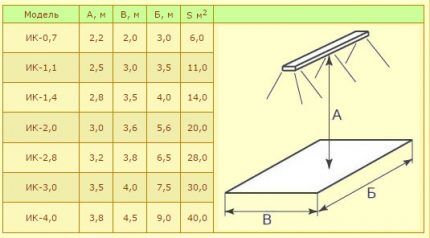
When organizing additional heating using this equipment, you can afford to slightly reduce the temperature in the main heating system without the slightest risk to health.
The temperature felt by a person in the desired zones will still be comfortable, despite the cooler air. Thus, the “IR additive” allows you to reduce energy consumption and save a lot on heating.
Emitters installed under the ceiling or built into it do not create any problems when installing other equipment, furniture, and interior items. Compact floor-standing models can be easily transported between rooms and taken on the road.
Thanks to ICO, it is also possible to solve some specific problems - for example, to create thermal curtains in front of panoramic windows, stained glass windows, domes and other translucent structures, the heat-shielding properties of which may not be sufficient.
IR radiation directed at the window structure facilitates trouble-free cleaning of ice and snow - precipitation simply melts without having time to freeze. Steps, porches, paths leading to the house, and garage exits can be cleaned in a similar way.Such work cannot be done with such high quality by human hands.
As for the energy consumption of infrared units, their power can range from a couple of tens of watts to several kilowatts. Despite the considerable “gluttony” of the devices, they are considered highly efficient, since about 90% of the energy consumed is converted into heat.
With criteria selection of infrared heaters The following article will introduce you to the contents of which we advise you to familiarize yourself with.
Types of units and their features
The following types of ICO are distinguished:
- electrical;
- diesel;
- gas;
- devices with hot water supply.
Application of diesel and gas units optimally in the open air; for heating residential premises this is not the best option. Such equipment is as economical as possible, but to ensure its high-quality and safe operation, combustion products must be removed.
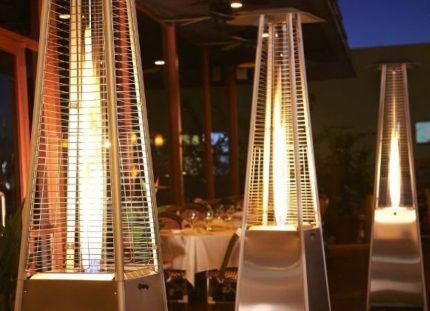
The most popular and purchased are electrical appliances with infrared lamps. In the simplest devices of this type, the heating coil (tungsten) is placed in a transparent glass quartz tube. Such equipment has a short warranty period (only 1-2 years) and a relatively affordable price.
The power consumption of the devices is 1-2.5 kW. The main disadvantage is the presence of visible radiation, albeit not very intense. For people with hypersensitive eyes, regular “contemplation” of such devices may be extremely undesirable.
ICOs with a base made of carbon fibers are more durable (able to work without interruption for 5 years or more), but they are also expensive. Visible radiation carbon heaters is also present.
Ceramic devices are the best choice among electric infrared heaters. Their heating coil is securely “hidden” in a ceramic shell: there is no visible glow from the devices. Manufacturers' warranty for such equipment is from 3 years. Ceramic heaters have a wide range of power consumption - this is their important advantage.
Depending on the installation method, the ICOs are:
- wall;
- floor;
- ceiling
Ceiling units are the most in demand today - they completely eliminate the effect of convection, which means they do not tolerate dust.
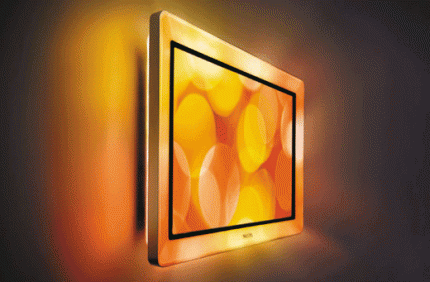
There are newcomers to the “family” of infrared devices that have appeared on the consumer market relatively recently. This micathermic heaters, the article we recommend will introduce you to the features of their operation and design, as well as guidelines for selection.
Popular myths about emitters
Despite the many obvious advantages, the question of the harm of IR heaters stops many from purchasing. Let's try to debunk the most common prejudices regarding radiant heating equipment.
Myth No. 1. IR heaters are dangerous a priori
It is impossible to speak categorically about the dangers of infrared equipment. This is equivalent to saying that the Sun is 100% evil. After all, their action is similar.
On a hot summer day in the sun, especially without a hat, you can easily suffer from heatstroke. But if you choose the right time for a walk, wear a scarf and sit in the shade, the sun's rays will bring exceptional benefits.
The same applies to infrared emitters. Sitting in an embrace with a device of dubious quality is definitely dangerous. But a well-chosen and positioned device from a trusted brand will not do any harm: on the contrary, it will improve your well-being, have a tonic effect on the body and save money on heating.
The effectiveness and safety of infrared radiation in a reasonable dosage has been proven by many scientific studies. A strong argument in favor of IR radiation is its widespread use in medicine and manufacturing (including food production).
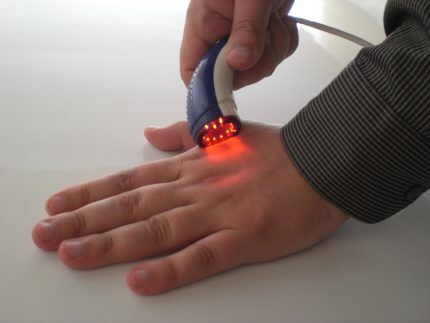
Myth No. 2. Devices burn oxygen
Not a single heater burns oxygen - this is an ordinary story. Oxygen is an oxidizing agent, and combustion is, in fact, a special case of oxidation, accompanied by the release of heat. Oxidize the oxidizing agent? This is some kind of anti-scientific nonsense.
It is more correct to say that heating equipment can “dry” the air (and with it all the mucous membranes) in the room. After all, a decrease in the relative humidity of the air is a natural process when it is heated. Only house dust can “burn” the heater.
By the way, you should not believe the advertising slogans of manufacturers that there are good heaters that do not dry the air at all (read - their products), and there are bad ones (that is, from all other companies). All heating units reduce indoor humidity. ICO is no worse or better than others in this matter.
How to deal with drought? To make it easier to breathe in the house during the heating period, the rooms need to be regularly ventilated, wet cleaning done daily, and perhaps purchase an air humidifier.
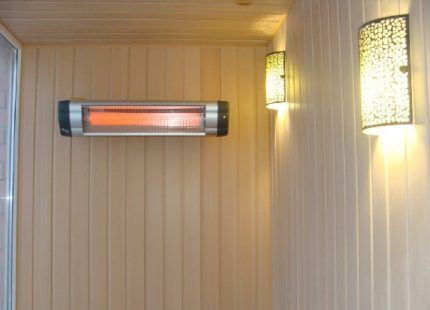
What is the real danger?
One of the most likely harmful effects of ICO is drying out the skin. The surface of the skin, being exposed to an infrared source, heats up and moisture evaporates from its surface. But since the subcutaneous layers do not have time to warm up, the body does not produce sweat. Because of this, the skin “dries out” and sometimes burns occur.
If you believe consumer reviews about infrared units, the “baking” effect during their operation is quite common, and the skin especially suffers in infrared saunas. The effect of intense infrared radiation on people has been studied for a long time - both by physiotherapists and specialists in charge of occupational safety issues.
With prolonged or insufficient exposure, infrared rays are considered a highly harmful factor. In physiotherapy, the effect of using radiant heat is considered beneficial in strictly regulated “portions” and a short duration of irradiation.
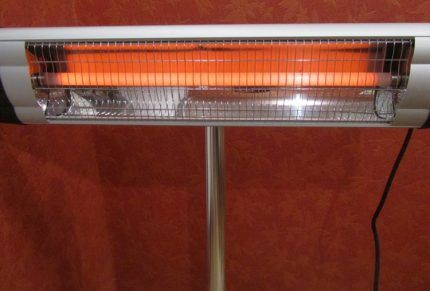
IR heaters also pose a danger to the eyes - thermal damage to the lens and retina can provoke the development of cataracts, as well as contribute to the progression of existing problems with the organs of vision.
Infrared rays directed directly at the head cause migraines, nausea, and deterioration in general well-being. Such complaints from owners of ceiling radiators are especially frequent.
Whether an infrared heater will cause real harm depends in each specific case on the following points:
- Wavelength emitted by equipment. Long heat waves are most beneficial for the human body; short ones, penetrating through the skin and even the bones of the skull, do not act in the best way;
- Radiation intensity. The body reacts positively to infrared rays with an intensity of up to 100 W/m2: the activity of biochemical processes increases, vigor appears, and appetite improves. But radiation intensity above 150 W/m2 can be dangerous: it suppresses the immune system and leads to irreversible cell damage;
- Individual sensitivity. Some people respond well to exposure to infrared rays, while others immediately feel worse. You should always listen to your feelings.
It is also worth remembering that there are a number of diseases for which infrared heating is contraindicated regardless of wishes (tumors, cardiovascular diseases).
Ways to avoid negative impact
To reduce the possible harmful effects of heaters, follow a number of simple rules when choosing and installing them:
- There is no need to strive to purchase a super-powerful device; it is better to buy several units of lower power. This will provide more comfortable heating. Several devices will evenly warm the body from all sides.
- The specimen you like should be carefully examined. Read reviews on the Internet, closely examine its appearance in the store, find out from the sales consultant all the nuances of operation.
- It is better to refuse the cheapest devices from unknown brands. As a rule, they are made of materials of dubious quality and, when heated, release dangerous (and even toxic) substances.
- The selection of equipment power should be made taking into account the type of room, ceiling height, and quality of thermal insulation.
- You should not install ICO in the bedroom and nursery.But if this is really necessary, it should be positioned in such a way that the rays are not directed at the bed and other areas where people are constantly occupied.
An ideally placed heater gives off heat to walls, floors, and pieces of furniture and does not cause discomfort to a person.
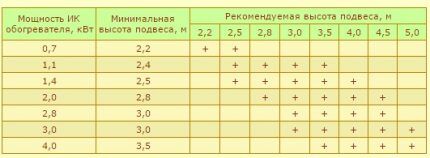
Nowadays, heating schemes for country houses based on infrared heating systems are widely used. Features of their design and operation in detail described here. The presented article examines the specifics of an effective version of PLEN.
Conclusions and useful video on the topic
Video #1. A short answer from an expert about the dangers of infrared units:
Video #2. Reviews and impressions of real users of IR devices:
High-quality PPIs, selected and placed according to basic security rules, will not cause any harm. They will provide high thermal comfort and good energy savings.
Modern infrared units are efficient, hygienic and low maintenance - so in many ways they are a really good choice. The main thing is to approach the purchase wisely, and not be tempted by any advertising “odes”.
We are interested in your opinion regarding the use of infrared heaters. Please write comments in the block below. Ask questions, share useful information and photos on the topic of the article.




I concluded for myself that IR heaters need to be positioned correctly and used correctly. Those.You can’t just put it in a room and forget about its existence. You still need to choose it, and this is not the easiest process, and the fact that you can get burned makes you think seriously. The only thing I liked was the idea of placing it away from people and heating up some objects if necessary.
When we were looking for heating options for April-May and September-October, we settled on the infrared type due to its low gluttony. We were lucky, and the portable unit we tested has been in service for four years now. I like that there is no smell of burnt dust when working. But you need, of course, to watch where it is directed, it has baked your legs a couple of times, and the beginning of this process is difficult to control, because At first it's just warm.
The safety of IR heaters is a myth. Here one commentator’s feet got scorched... Or maybe his brains got scorched... We won’t know about brains, since you can’t write a comment with scorched brains. Dealers of this product are endlessly inventing ways to fool their customers. Either they will call it micathermic (where is the IR?), or they will say that the buyers themselves are to blame, since they installed it in the wrong place, used it in the wrong way... and so, sooooo... safe... It's their own fault, they say. Good excuse